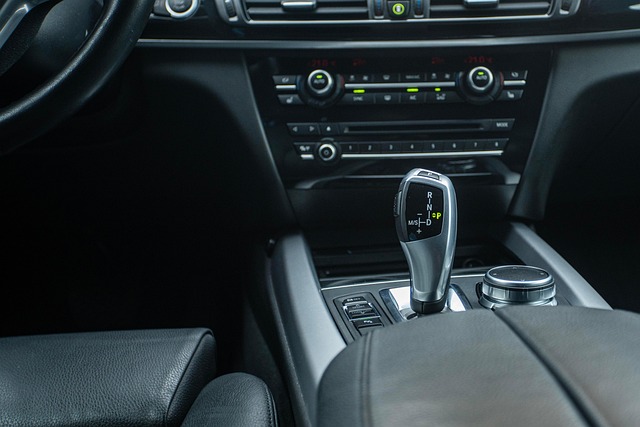Looking to register your car in California? This guide breaks down the process step-by-step. From understanding crucial requirements like vehicle eligibility and needed documents, to using a VIN verifier to ensure your car’s unique identification number (VIN) is accurate, each phase is simplified. Learn how to complete the California Vehicle Registration Application, pay associated fees, and receive your official certificate.
- Understand California Car Registration Requirements
- Gather Necessary Documents for Vehicle Registration
- Verify Vehicle Identification Number (VIN) with a Tool
- Complete and Submit the California Vehicle Registration Application
- Pay Registration Fees and Receive Your Registration Certificate
Understand California Car Registration Requirements

Before registering your car in California, it’s crucial to understand the state’s specific requirements. The process involves several steps, including ensuring your vehicle meets safety and emissions standards. One key aspect is verifying the Vehicle Identification Number (VIN). California requires a VIN verifier to confirm the vehicle’s history and ensure it isn’t stolen or has any outstanding issues. This step can be completed through a mobile VIN verifier or by visiting a local DMV office for an inspection.
For out-of-state residents, additional documentation may be needed, such as proof of insurance and a clean driving record. It’s also essential to have all necessary paperwork, including the title and any registration forms, filled out accurately. A mobile VIN verification service can simplify this process by providing on-demand inspections, making it more convenient for both new and existing California residents.
Gather Necessary Documents for Vehicle Registration

Before you start the registration process, it’s crucial to gather all the essential documents for vehicle registration in California. This typically includes your vehicle’s registration certificate from the previous state, a valid driver’s license, proof of insurance, and perhaps the most critical document—the Vehicle Identification Number (VIN) verifier. The VIN is a unique 17-character code that identifies your car, and you can easily obtain this through a mobile VIN verifier or by checking your vehicle’s label.
Additionally, expect to provide details about your vehicle’s make, model, and year, as well as proof of ownership, which could be a title or a bill of sale. A mobile VIN verification service can streamline this process by quickly inspecting your vehicle’s history, ensuring all information is accurate, and saving you time during the California registration.
Verify Vehicle Identification Number (VIN) with a Tool

Before proceeding with the car registration process, it’s crucial to ensure your vehicle’s authenticity through a reliable VIN (Vehicle Identification Number) verification method. One effective way is to utilize a mobile VIN verifier or scanner. These tools are designed to cross-reference the VIN against official databases, providing instant and accurate information about the vehicle’s history and specifications.
By opting for a mobile vin inspection or verification service, you can conveniently check your car’s details from anywhere. This includes identifying any potential issues, such as outstanding recalls, previous accidents, or theft reports, which could impact registration. A valid VIN check is an indispensable step in ensuring a smooth registration process and maintaining the integrity of California’s vehicle record-keeping system.
Complete and Submit the California Vehicle Registration Application

After gathering all the necessary documents, it’s time to complete and submit your California Vehicle Registration Application. This form is crucial for registering your vehicle and obtaining a registration certificate. Make sure to fill out every section accurately and completely. One essential component of this process involves verifying the Vehicle Identification Number (VIN). You can do this using a mobile VIN verifier or conducting a traditional VIN inspection at a certified location.
When submitting your application, ensure that you follow all state guidelines for both document preparation and submission. This might include providing proof of insurance, paying registration fees, and ensuring your vehicle meets all safety and emission standards. Completing these steps accurately will streamline the registration process and help avoid potential delays or issues down the road.
Pay Registration Fees and Receive Your Registration Certificate

After submitting your application, it’s time to pay the registration fees for your vehicle. The cost varies based on your car’s type and weight, so be sure to check with the DMV or use their online fee calculator. You can typically pay by credit card, debit card, or check. Once your payment is processed, you’ll receive your Registration Certificate, also known as a Proof of Registration. This document confirms that your vehicle is legally registered in California.
Make sure to keep this certificate on hand and store it securely. It’s essential for proof of registration during traffic stops or when selling your car. If you’ve opted for mobile services, like using a mobile vin verifier or undergoing a mobile vin inspection, the process might be slightly different, but you’ll still receive the same Registration Certificate upon successful completion.
Registering a car in California involves understanding specific requirements, gathering essential documents, and accurately verifying the Vehicle Identification Number (VIN) using a reliable VIN verifier. By completing these steps and submitting the application, you’ll be well on your way to obtaining your registration certificate. Remember to keep all necessary paperwork up-to-date for a smooth and efficient process.
